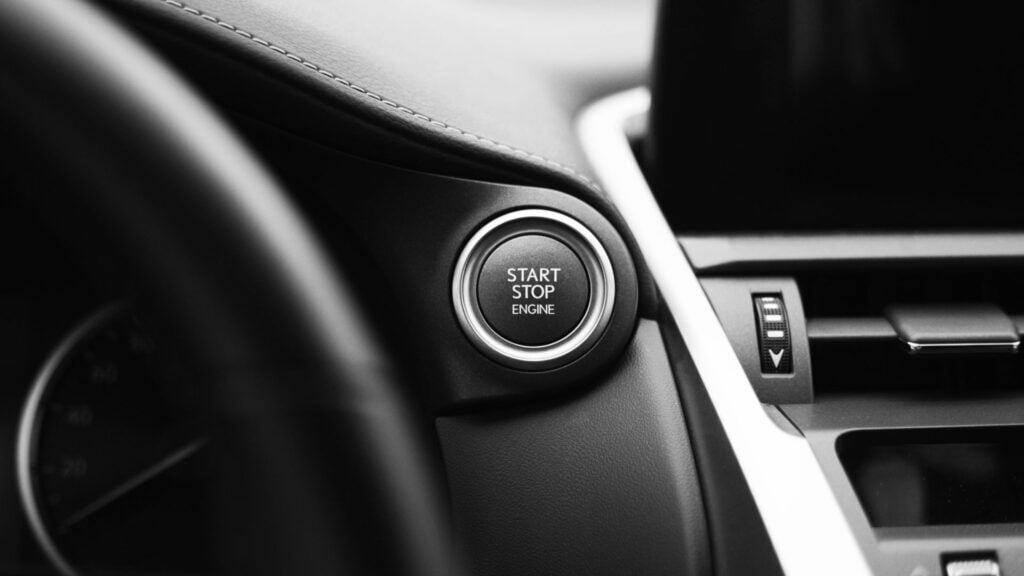- Jeep Cherokee Push Button Start Not Working: Troubleshooting Tips To Get You Back on the Road Fast! - 11 November 2023
- Haval H2 Problems: The Complete Troubleshooting Guide - 11 November 2023
- Gwm P Series Problems: Troubleshooting Guide for Common Issues - 11 November 2023
The shaking of a car while driving can be caused by issues with the tires or wheels, such as tire imbalance or misalignment, which affects the overall stability of the vehicle. This can lead to vibrations felt through the steering wheel and the entire car body.
Are you concerned about why your car shakes while you’re driving? If so, there could be several reasons behind this unsettling occurrence. It’s important to investigate and resolve these issues as soon as possible to ensure your safety on the road.
One common cause of car shaking is tire imbalance or misalignment, which can affect the overall stability of your vehicle. As a result, you may experience vibrations that can be felt through the steering wheel and the entire car body. We will explore some of the potential reasons why your car may be shaking and provide tips on how to address these issues.
Common Causes Of Car Shaking
Experiencing a shaky car while driving can be unnerving and potentially dangerous. Understanding the common causes of car shaking can help you diagnose and resolve the issue proactively. In this section, we will explore four common culprits behind car shaking: uneven tire wear, wheel alignment issues, unbalanced tires, and suspension problems.
Uneven Tire Wear
One of the leading causes of car shaking is uneven tire wear. When your tires wear unevenly, they can develop bumps or irregularities, leading to vibrations while driving. These vibrations can be felt through the steering wheel, floorboard, or even the entire vehicle. Several factors contribute to uneven tire wear, including improper tire pressure, lack of regular tire rotation, and poor suspension alignment.
Wheel Alignment Issues
Wheel alignment refers to the adjustment of the angles at which your wheels make contact with the road. When your wheels are not properly aligned, they can cause your car to shake. Misaligned wheels can result from driving over potholes, hitting curbs, or simply normal wear and tear. Common signs of wheel alignment issues include uneven tire wear, a pulling sensation to one side, and steering wheel vibrations.
Unbalanced Tires
Tire balance refers to the equal distribution of weight around your tires and wheels. When your tires are not balanced, they can generate vibrations that make your car shake. Tire balancing issues often arise from uneven tread wear or the accumulation of debris inside the wheels. If you notice shaking at higher speeds or when accelerating, unbalanced tires could be the cause.
Suspension Problems
A faulty suspension system can also contribute to car shaking. The suspension system is responsible for maintaining stability, minimizing vibrations, and ensuring a smooth ride. When components such as shock absorbers, struts, or ball joints wear out or become damaged, the suspension system may fail to perform effectively, resulting in car shaking. If you encounter a bumpy or shaky ride, combined with poor handling and increased braking distance, it’s important to inspect your suspension system.

Credit: www.prevention.com
How Tire Wear Leads To Car Shaking
Driving a car that shakes can be a nerve-wracking experience, but understanding the underlying causes can help you address the issue effectively. One common culprit behind car shaking is tire wear. The condition of your tires plays a vital role in the overall stability and smoothness of your drive. Let’s delve deeper into this topic by exploring the different aspects of tire wear and how it can lead to car shaking.
Understanding Tire Tread
Tire tread refers to the grooves and patterns on the surface of the tire that help it maintain grip on the road. Over time, constant use and exposure to various road conditions can cause the tread to wear down. This wears away the tire’s ability to provide adequate traction, especially during acceleration and braking. As the tread diminishes, the risk of car shaking increases due to the uneven distribution of weight and diminished stability.
Effects Of Uneven Tire Wear
Uneven tire wear occurs when the tires wear at different rates on different parts of the tread. This can be caused by a variety of factors, such as improper alignment, insufficient tire rotation, or issues with the suspension system. When the tires experience uneven wear, it disrupts the balance of the vehicle and creates vibrations that can result in car shaking. These vibrations are often felt through the steering wheel or the entire car.
Impact On Car Stability
Proper tire condition and balance are critical for maintaining car stability. When the tires wear unevenly, it affects the way the vehicle interacts with the road surface. As a result, the car becomes more prone to shaking, especially at higher speeds. The vibrations caused by uneven tire wear can affect the suspension system and other components, further compromising the overall stability of the car. This can lead to reduced control and increased risks while driving.
Importance Of Regular Tire Maintenance
Regular tire maintenance is key to preventing car shaking and ensuring a smooth and safe driving experience. By scheduling regular tire rotations, checking tire pressure, and maintaining proper alignment, you can help prolong the life of your tires and reduce the chances of uneven wear. Additionally, timely replacements of worn-out tires are essential for maintaining optimal stability and reducing the risk of car shaking on the road.
Addressing Wheel Alignment Issues
Signs Of Poor Wheel Alignment
If you’ve noticed your car shaking when you drive, one of the potential causes could be poor wheel alignment. Identifying the signs of poor wheel alignment is crucial in addressing the issue promptly. Look out for these signs:
- Uneven or abnormal tire wear
- Vibrations in the steering wheel
- Vehicle pulling to one side
- Squealing tires
- Off-center steering wheel
Paying attention to these signs and taking action can help prevent further damage to your car and ensure a safer driving experience.
Effects On Car Handling
Poor wheel alignment not only leads to a shaky ride but also affects the overall handling of your car. When the wheels are not properly aligned, the car’s suspension system and steering components have to compensate for the imbalance. This can result in:
- Reduced stability and control
- Uneven tire wear leading to decreased tire lifespan
- Increased fuel consumption
- Difficulty in maintaining a straight line when driving
These effects can worsen over time if left unaddressed. Therefore, it’s important to understand the impact of poor wheel alignment on your car’s handling to ensure a smooth and safe driving experience.
Importance Of Wheel Alignment
Wheel alignment is a key aspect of vehicle maintenance that promotes optimal performance and extends the lifespan of your tires. Proper alignment involves adjusting the angles of your car’s wheels to manufacturer specifications, ensuring they are parallel to each other and perpendicular to the ground. It is vital because:
- Improves stability and control
- Enhances tire longevity
- Reduces rolling resistance, resulting in better fuel efficiency
- Preserves suspension components
- Provides a smoother and more comfortable ride
Regular wheel alignment not only ensures your car drives smoothly but also saves you money in the long run by preventing premature tire wear and costly repairs.
Seeking Professional Help
While it may be tempting to attempt wheel alignment adjustments yourself, seeking professional help is highly recommended. Trained technicians possess the knowledge, expertise, and specialized tools to accurately assess and correct any alignment issues your car may have. They can:
- Conduct a comprehensive alignment inspection
- Identify specific alignment problems
- Make precise adjustments to restore proper alignment
- Ensure your car’s suspension and steering systems are functioning optimally
By entrusting the task to professionals, you can have peace of mind knowing that your car is in good hands and will be properly aligned to provide a safe and comfortable driving experience.
The Role Of Unbalanced Tires
Are you experiencing an annoying shaking sensation when you drive your car? One of the common culprits behind this issue is unbalanced tires. Tire balancing plays a crucial role in maintaining a smooth and stable ride. When the weight distribution of your tires is uneven, it can lead to vibrations and shaking that can negatively impact your driving experience. In this article, we’ll explore the role of unbalanced tires in causing car shaking and discuss the symptoms, implications, and the importance of balancing tires for a smoother ride.
How Tire Balancing Works
Tire balancing involves ensuring that the weight distribution around the circumference of each tire is even. This is achieved by attaching small weights to the rim of the tire in areas where imbalance is detected. By carefully adding or subtracting weight, tire technicians can eliminate or minimize vibrations caused by uneven weight distribution.
Symptoms Of Unbalanced Tires
It’s important to be aware of the signs indicating unbalanced tires. If you notice any of the following symptoms, it’s likely that your tires are in need of balancing:
- Shaking or vibrations felt in the steering wheel, seat, or floorboard while driving
- Uneven tire wear, such as bald patches or excessive wear on certain areas of the tire
- Inconsistent handling and a lack of stability, especially at higher speeds
- Increased fuel consumption due to the additional strain on the engine caused by the vibrations
Implications For Car Performance
Unbalanced tires not only affect your driving comfort but can also have a significant impact on the performance of your vehicle. The vibrations caused by unbalanced tires can lead to premature wear and tear on various components, including suspension parts, wheel bearings, and steering mechanisms. Over time, this can result in expensive repairs and reduced overall lifespan of these critical car parts.
Additionally, the vibrations can cause your vehicle’s tire grip to be compromised, affecting the stability and safety of your car. This not only puts you and your passengers at risk but also decreases your control over the vehicle, especially in emergency situations.
Balancing Tires For A Smooth Ride
To ensure a smooth and comfortable driving experience while maintaining the performance and safety of your car, it’s essential to have your tires balanced regularly. Balancing tires should be part of your routine maintenance schedule, especially after getting new tires or performing any tire repairs or rotations.
By addressing the issue of unbalanced tires promptly, you can prevent further damage to your vehicle and enjoy a smoother ride with improved handling and fuel efficiency.
Identifying And Resolving Suspension Problems
Experience a smooth and safe drive by addressing the underlying suspension problems causing your car to shake. Get insights on identifying and resolving these issues to improve your overall driving experience.
Impact Of Suspension Issues
Suspension problems in a car can have a significant impact on your driving experience and overall safety. When your car shakes while driving, it can make the ride uncomfortable, reduce control, and even increase the risk of accidents. The suspension system is responsible for supporting the weight of the vehicle, absorbing shocks from the road, and ensuring a smooth and stable ride. Therefore, when there are issues with the suspension, it can affect the handling, stability, and overall performance of your car.
Signs Of Suspension Problems
Identifying suspension problems early on is crucial for prompt repairs and avoiding further damage. There are several common signs that indicate potential suspension issues:
- Uneven tire wear: A visual inspection of your tires can reveal uneven tread wear, indicating suspension problems.
- Pulling to one side: If your car tends to drift or pull to one side while driving, it could be a sign of suspension issues.
- Excessive bouncing: When you hit a bump or dip in the road, if your car continues to bounce excessively, it suggests problems with the suspension system.
- Noise and vibration: Unusual noises, such as clunking or squeaking, and vibrations felt in the steering wheel or throughout the vehicle can indicate suspension issues.
- Difficulty steering: If you experience difficulty steering or notice increased effort required to turn the wheel, it could be a result of suspension problems.
Common Suspension Components
The suspension system of a car is comprised of several vital components, each playing a specific role in maintaining a smooth and stable ride:
| Component | Description |
|---|---|
| Shock absorbers/struts | They dampen the impact of bumps and dips on the road, reducing bouncing and vibrations. |
| Springs | They support the weight of the vehicle and help absorb shocks from uneven roads. |
| Control arms | These link the suspension components to the frame of the car, allowing for movement and maintaining stability. |
| Bushings | They provide cushioning and reduce vibrations between different suspension components. |
Seeking Expert Diagnosis And Repairs
While some suspension issues can be visually identified, others require professional expertise to diagnose accurately. When you experience shaking or other signs of suspension problems, it is recommended to seek assistance from a qualified mechanic or automotive technician. They have the knowledge, experience, and diagnostic tools to assess the condition of your suspension system and determine the necessary repairs.
Remember, ignoring suspension problems can lead to further damage and compromise your safety on the road. So, don’t hesitate to schedule an inspection and get those suspension issues resolved promptly!
Frequently Asked Questions On Why Does My Car Shake When I Drive
Why Does My Car Shake When I Drive?
When your car shakes while driving, it could be due to unbalanced tires, worn-out suspension components, or engine issues.
What Causes A Car To Shake At High Speeds?
A car shaking at high speeds can indicate wheel alignment problems, tire issues, or worn-out brake rotors.
How Do I Fix My Car’s Shaking Problem?
To fix your car’s shaking issue, you can get a tire balance and alignment, check suspension components, and address any engine or transmission problems.
Is It Safe To Drive A Shaking Car?
Driving a shaking car is not safe as it can lead to further damage and compromise your control over the vehicle. Get it checked by a professional mechanic.
Can An Engine Misfire Cause A Car To Shake?
Yes, an engine misfire can cause your car to shake. It occurs when one or more cylinders fail to ignite properly, leading to uneven power delivery.
Conclusion
A car shaking while driving is a common issue that can have various causes. From worn-out tires and wheel misalignment to engine problems and suspension issues, each factor should be carefully examined and addressed. Regular maintenance, including tire rotations and balancing, can significantly reduce the risk of shaking.
If the problem persists, it is essential to seek professional help for a thorough inspection and repair. Remember, resolving these issues promptly ensures a safe and smooth driving experience.


